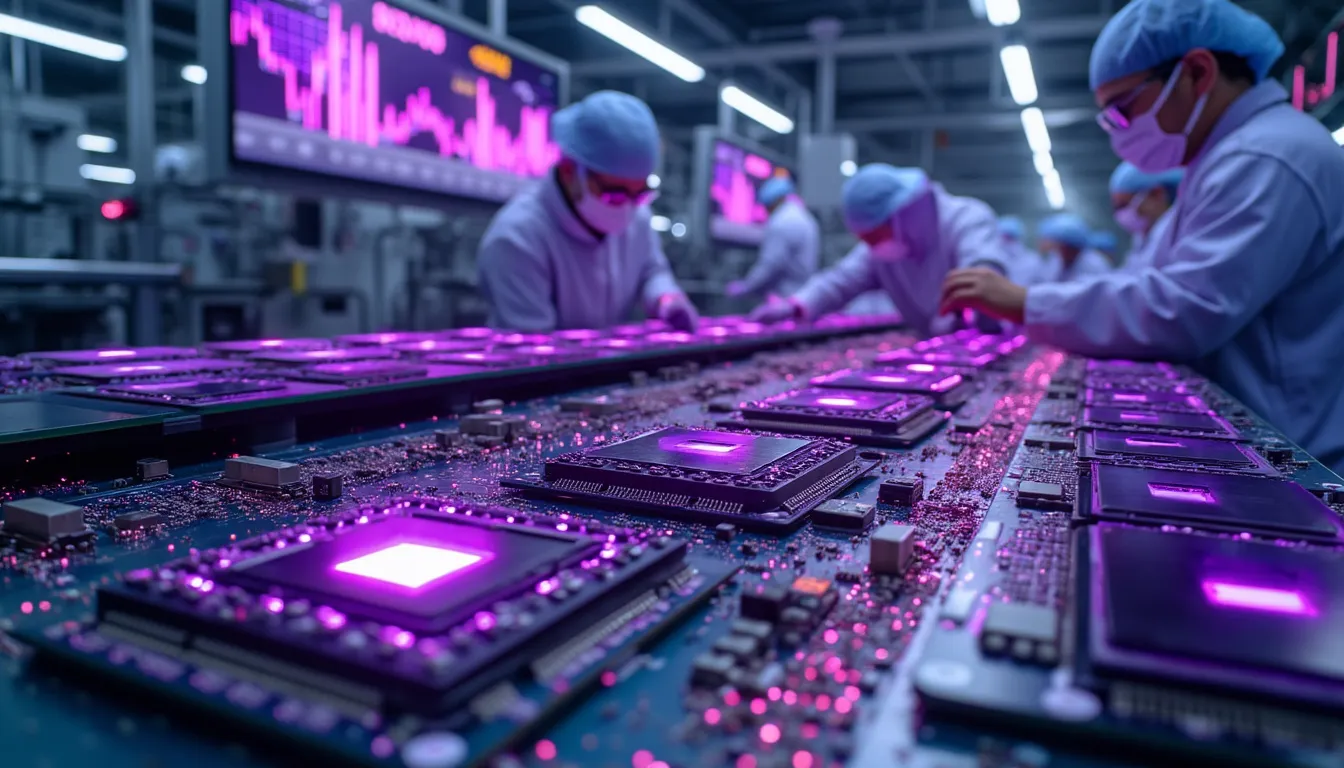Momentum Meets Resistance: Micron’s Role in the Semiconductor Shift
Micron Technology (MU), a global leader in advanced memory and storage solutions, has become a bellwether for the semiconductor sector’s response to AI-driven demand. On July 17, 2025, with the broader market approaching new highs, Micron’s shares fell 2.98% to $112.57 on heavy volume (29,515,991 shares), underperforming both its peers and the S&P 500. As a foundational supplier for AI, automotive, and mobile markets, Micron’s outsized move raises questions about investor sentiment, supply chain cycles, and the durability of the sector’s recent rally.
Key Takeaways
Micron down 2.98% intraday, closing at $112.57, on nearly 30M shares traded.
Strong DRAM growth (+51% YoY in Q3), with FY25 revenues projected up 59%.
Recent analyst optimism tempered by sector-wide volatility and profit-taking.
AI, automotive, and mobile end-markets drive fundamentals, but valuation and inventory risks weigh.
Recent news headlines focus on sustainability of growth and analyst buy recommendations.
Micron’s Position in the AI-Driven Semiconductor Boom
Micron Technology, headquartered in Boise, Idaho, is the world’s fourth-largest semiconductor memory manufacturer. The company produces DRAM, NAND, and NOR memory, powering everything from AI servers and autonomous vehicles to smartphones and PCs. As generative AI and advanced data centers drive an unprecedented surge in memory demand, Micron has emerged as a critical supplier—and a key proxy for the sector’s fortunes.
Recent Performance and Fundamental Drivers
Micron’s Q3 results, highlighted by a 51% year-on-year jump in DRAM sales, underscore the impact of AI adoption. Zacks Investment Research reports, “AI, auto, and mobile markets powered MU's DRAM sales up 51% in Q3, with FY25 revenue set for nearly 59% growth.” These numbers place Micron at the epicenter of secular growth trends—but also expose it to cyclical swings.
Despite this, today’s nearly 3% slide on elevated trading volume suggests that the stock is encountering resistance after a sustained multi-quarter rally. Some investors appear to be locking in profits or reassessing risk as supply-demand dynamics stabilize from peak levels.
Performance Snapshot: Intraday Slide Amid Sector Strength
Metric | Value |
|---|---|
Price (Jul 17, 2025) | $112.57 |
Previous Close | $116.43 |
Intraday Change | -2.98% |
Volume | 29,515,991 |
Compared to the S&P 500’s modest gain, Micron’s outsized loss stands out. This divergence suggests company- or sector-specific factors at play, rather than broad market weakness.
Historical Trend
Micron’s stock has nearly doubled since 2023, riding waves of optimism around AI infrastructure. However, the last few weeks have seen increased volatility, with the stock oscillating in a broad $110–$120 range as investors digest new data on memory pricing and inventory normalization.
Analyst and Market Sentiment: Cautious Optimism Amid Volatility
Recent analyst coverage has been bullish, with most major brokerages reiterating Buy or Outperform ratings. Zacks highlights that “Wall Street analysts look optimistic,” but also cautions that investors should weigh the potential for near-term profit-taking and sector rotation.
“When deciding whether to buy, sell, or hold a stock, investors often rely on analyst recommendations. Media reports about rating changes by these brokerage-firm-employed (or sell-side) analysts often influence a stock's price, but are they really important?”
— Zacks Investment Research (July 17, 2025)
The disconnect between positive analyst sentiment and today’s price action may reflect short-term technical factors rather than a fundamental shift in the narrative.
Parsing the Headlines: What’s Driving Today’s Weakness?
Profit-Taking After a Run:
The Motley Fool notes, “Micron stock is getting hammered again Thursday afternoon, down 3.1% through 12:20 p.m. ET.”
The stock’s outsized rally in recent quarters makes it vulnerable to pullbacks as investors rebalance portfolios.
Sector Rotation and Inventory Concerns:
Despite strong demand for AI memory chips, some analysts warn of potential inventory digestion in the second half of 2025, as supply catches up with demand.
Pricing power, especially in DRAM and NAND, remains robust but could moderate if end-market growth slows.
Macro Backdrop:
With the S&P 500 near record highs and volatility in tech, some institutional portfolios may be trimming risk positions in cyclical semiconductors.
The Memory Market’s Crucible: Navigating Growth and Cyclicality
Secular Growth vs. Cyclical Risks
Micron’s long-term thesis hinges on AI, edge computing, and next-generation automotive applications. However, the memory business is notoriously cyclical, and even the strongest secular drivers can’t fully insulate it from oversupply or price corrections.
Valuation and Forward Multiples
Despite the recent pullback, Micron’s forward price/earnings and price/sales multiples remain elevated relative to historical norms. This reflects high expectations for sustained double-digit growth, but also leaves the stock exposed if momentum wanes.
Conclusion: Micron as a Barometer for Semiconductor Sentiment
Micron’s notable decline today—amid an otherwise strong tape—signals investor caution after a period of exuberant gains. While the company’s fundamentals remain robust thanks to AI and next-gen technology adoption, the path forward will likely be choppier as the market digests inventory data and macro signals.
Micron’s performance underscores the importance of monitoring both secular growth narratives and cyclical risks. As a sector leader, Micron is a key stock to watch—both for opportunities and warning signs in the evolving semiconductor landscape.
Key Takeaway for Investors:
Micron’s strategic role in AI and memory markets is unquestioned, but today’s sharp decline reminds us that even sector leaders are subject to volatility, positioning shifts, and valuation resets. Active monitoring and risk management are essential for those navigating the next phase of the semiconductor cycle.

.svg)
.svg)
.svg)
.svg)

.svg)

.svg)
















